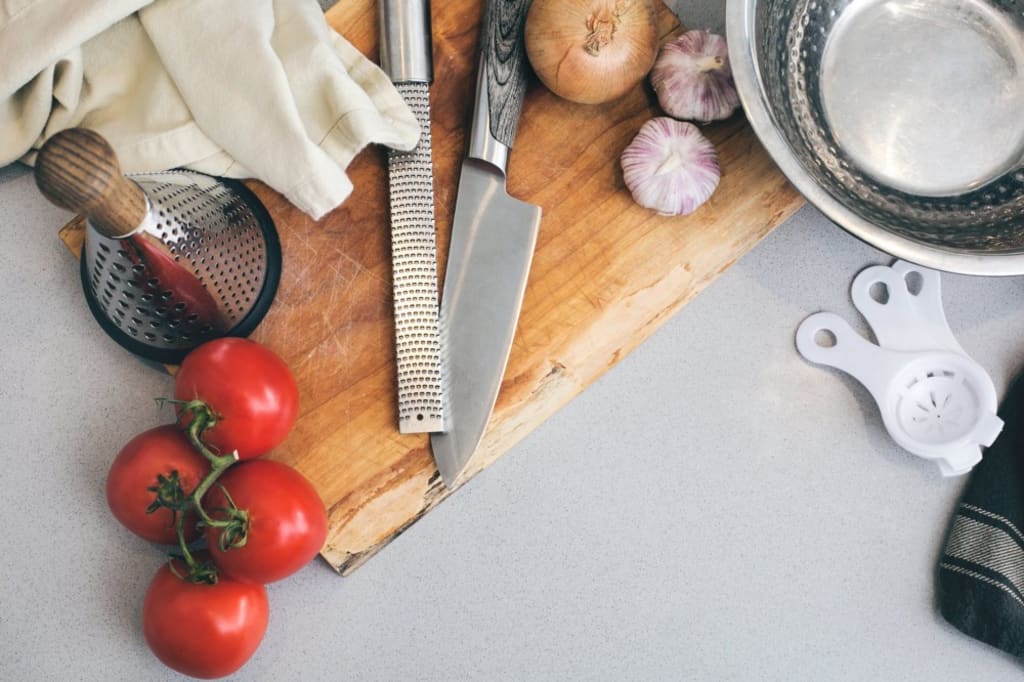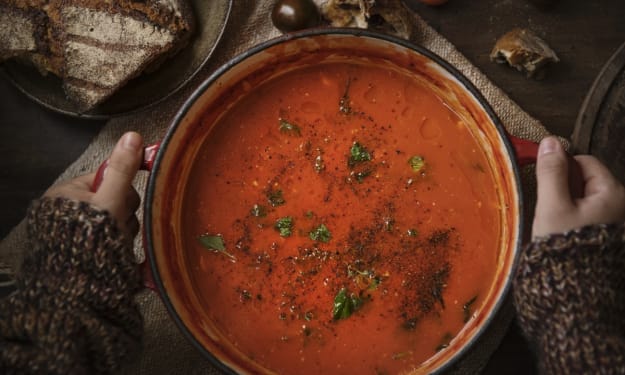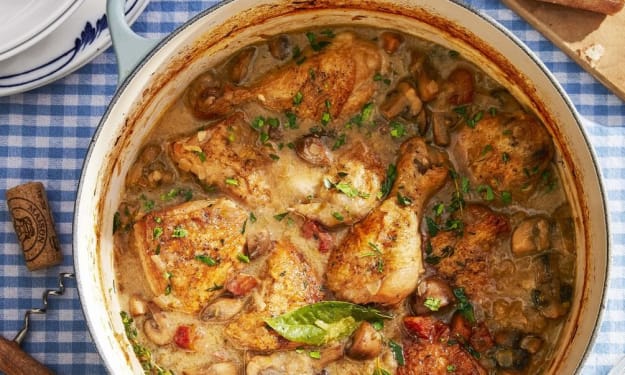
Food used to be something that tortured me. Nowadays, it is an expression of love, both towards my family and, yes, to myself.
Therefore, the kitchen is my sanctuary, and cooking is my rock. Located right at the center of my home, it’s the place where I run the entire operation, you know, that thing we call ordinary life.
I do many things every day: I write, read, work, exercise, …but they all are organized around the following questions.
What am I going to cook today? What time shall I start cooking to have food ready on time? What do I need to prep this meal?
Throughout the years, I have created a set of norms and systems that make things easier for me. Turns out, they also tend to make food healthier and delicious.
Here they are, my basic cooking principles.
Avocado oil + butter
Let’s say I’m going to cook a delicious steak. Or perhaps some tasty asparagus. Maybe I’m doing both.
Whatever the case might be, here’s tip number one: mix avocado oil and butter, half and half. For example, one tablespoon of avocado oil plus one tablespoon of butter.
Set the stove at medium-high temperature until your butter melts and starts bubbling. After that, you are ready to cook your steak.
Why?
Butter will give everything you cook a delicious taste. Since it has a very high smoke point, adding avocado oil will keep it from burning. Also, avocado oil is one of the healthiest things you can consume and, if you are pairing it with pasture-raised butter, then you have a winning combination.
What about extra virgin olive oil?
Now, drop everything else you might be doing and listen carefully. I need you to pay attention to me. Are you ready? Ok, here we go.
Never, never, never heat extra virgin olive oil.
Never.
Extra virgin olive oil is a gift from the gods. Why would you destroy it?
Why? Why?
So many times, I have been in someone’s kitchen and watch in horror how they take some beautiful olive oil and use it to fry a steak.
The horror…the acrid smell…the smoke…
Olive oil is full of benefits for your health and, let’s not forget; it adds a delicious taste to pretty much anything. So, please, be respectful.
Do not heat it.
What to do instead?
Once your food is ready, for example, the steak and asparagus we mentioned above, feel free to grab your olive oil and pour it all over your meal. If you are going to have salad as a side dish, you don’t need to get one of those sugary dressings they sell at the grocery stores. Just mix some olive oil with apple cider vinegar and you are done.
Oh, and the next time someone suggests you can cook with olive oil, just tell them Gaby said no.
Do not throw away pasta water
Pasta colanders …don’t even get me started on those. Here’s the thing: you grab a large pot, and fill it with water. Then, you add lots of sea salt, maybe some garlic, thyme, and oregano. Once the whole thing is in a raging boil, you add pasta. And then you are going to throw that valuable liquid away?
No. You don’t want to do that.
Right now, in that pot, you have the secret to the most delicious pasta ever.
How?
Listen up, peeps. This is what you are going to do. While your pasta is cooking, you are going to get your sauce ready. Let’s say you grab some ground meat and brown it in a bit of avocado oil and butter. Once it’s ready, do not drain the fat. Instead, add your sauce, whether it is homemade or one you bought from a brand you trust. Let the whole thing simmer for a little bit.
Once your sauce is done, it’s time to add the cooked pasta. Drain it, but save about two or three cups of the precious liquid in which you cooked it. I prefer to transfer pasta using a pasta fork (or is it a spoon?) by scooping it out from the water into the saucepan. Use the method you prefer.
Once the pasta and the sauce are together, add a bit of the water you saved until you get the desired consistency. Let it sit for a few minutes before serving.
You are welcome!
P.S. You can apply the same principle to mashed potatoes. Once your potatoes are fully cooked, save some of the water and mix it along with butter, cream, or whatever else it is you add to mashed potatoes.
Mind your tools
Respect your tools. Keeping them in good shape will help you do an efficient job in the kitchen. Also, your recipes will shine like never before. This includes keeping your work area clean and as organized as your daily routine allows. You don’t need to go all Marie Kondo here, just make sure you know where everything is.
How to go about this?
Sharpen your knives. Dull blades will mess up anything you attempt to do and will make you work slower.
Ditch plastic containers and embrace glass. Not only is this a healthier option, but you will also protect the planet. Besides, since plastic tends to store flavors, you’ll be protecting yourself from unpleasant surprises.
Give each item a home. When you need a grater, you must know precisely where it is going to be. Same for measuring cups. Heck, same for every one of your tools.
Read the instructions! Not all items can be placed in the dishwasher. Failing to read the labels could damage your utensils.
Residual heat is your best friend
Do you know how to get a juicy steak? How to end up with a piece of salmon that doesn’t feel like jerky?
All you have to do is turn your stove off. That’s right. Excessive heat is sucking flavor out of your food.
Killing the flame a couple of minutes ahead of time and letting residual heat finish the job will assure your food doesn’t feel like cardboard in your mouth. This is why, when it comes to meat, thermometers become an essential tool. As long as food has reached the desired temperature, you are good to go: no need to overcook to make sure you won’t end up in the hospital.
Season food as you cook
Flavor must be built from the bottom up. As you add ingredients, you must also sprinkle a bit more of salt and pepper, an extra pinch of parsley, some diced garlic…
If you stick to the seasoning you added at the beginning, or just sprinkle the whole thing with salt in the end, you might not get the desired result. It would also be helpful to keep a couple of spoons near the stove so you can taste and correct as you go.
If you are super busy, a slow cooker will save the day
No time to cook? Then you need to go slow. That’s right; the slow cooker will be your favorite tool. All you have to do is find a recipe that appeals to you, throw everything in, set a timer…and then go about your day.
6 to 8 hours later, you will have a delicious, warm meal. You can then go ahead and eat it or put it inside your pal, the freezer. Just let it cool for a bit, store in glass containers (see above), and during the week, you can forget about starting meals from scratch.
There you have it, folks.
These cooking tips could make your life easier. Some of them refer to keeping things organized; others are about how to make sure food will be tasty. In the end, we need both: a functional kitchen will keep us sane, and the delicious meals we prepare in it will make the whole thing worth it.
Now, there’s only one thing left to say: ¡a comer!
About the Creator
GB Rogut
Jack of all trades, mistress of poetry. Mexicana. Bi. Autistic. She/Her. You can support me on Patreon https://www.patreon.com/musingabout or visit my tree https://linktr.ee/GbRogut






Comments
There are no comments for this story
Be the first to respond and start the conversation.